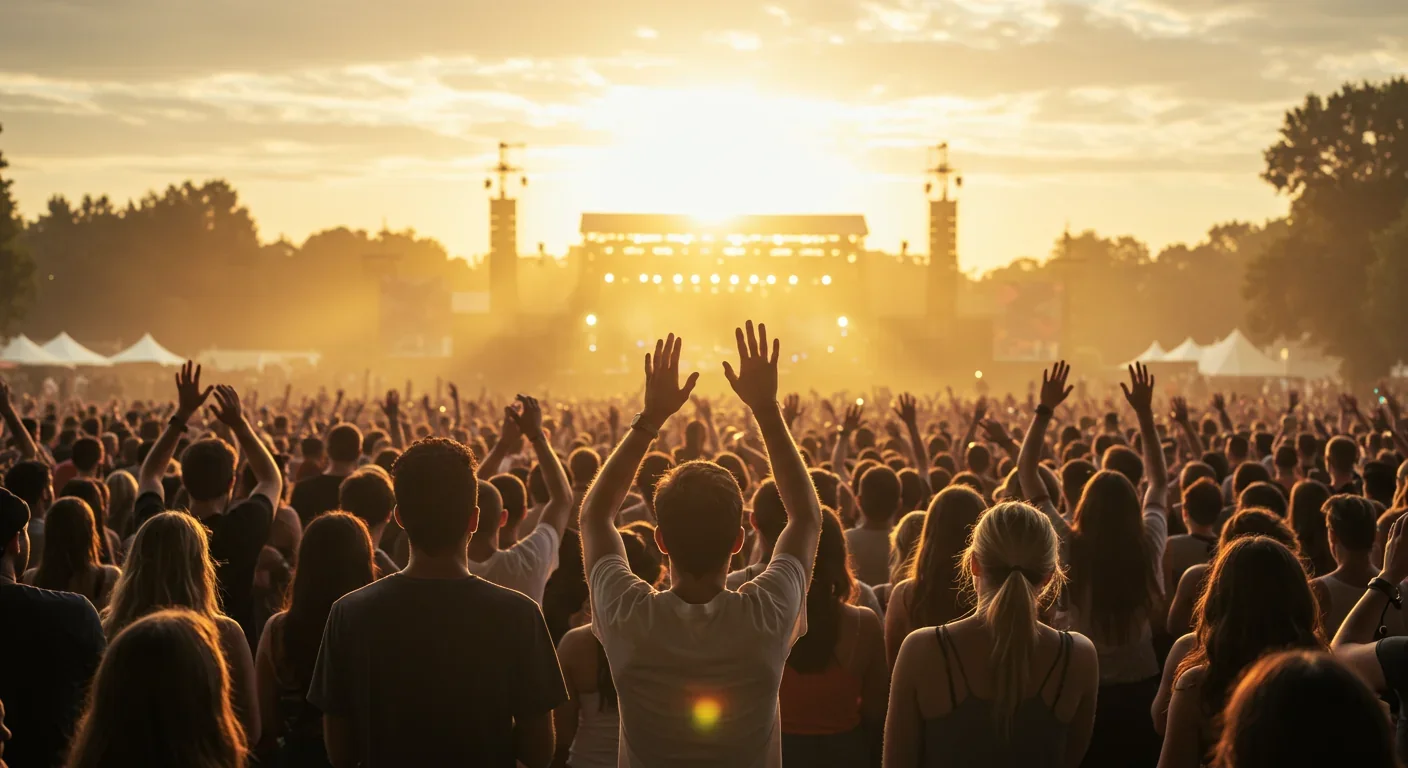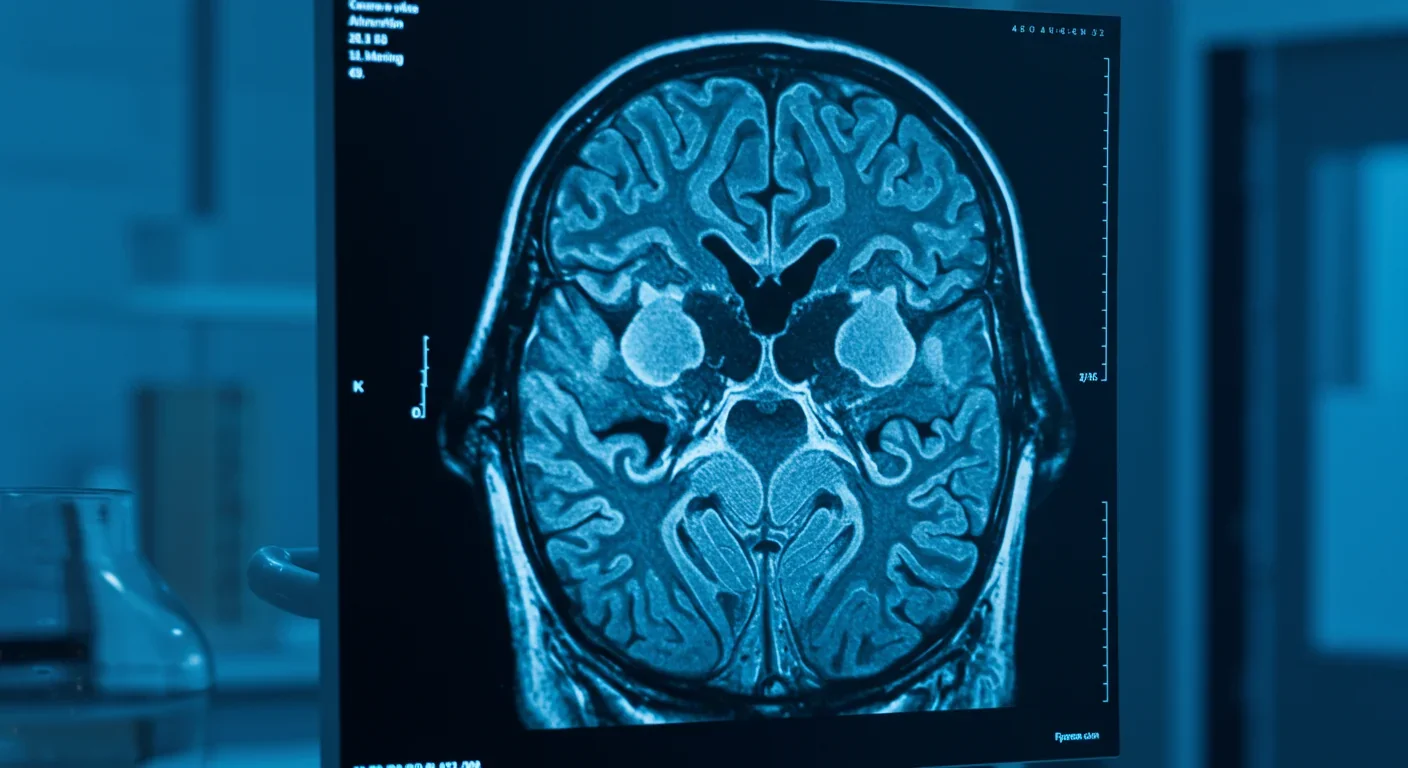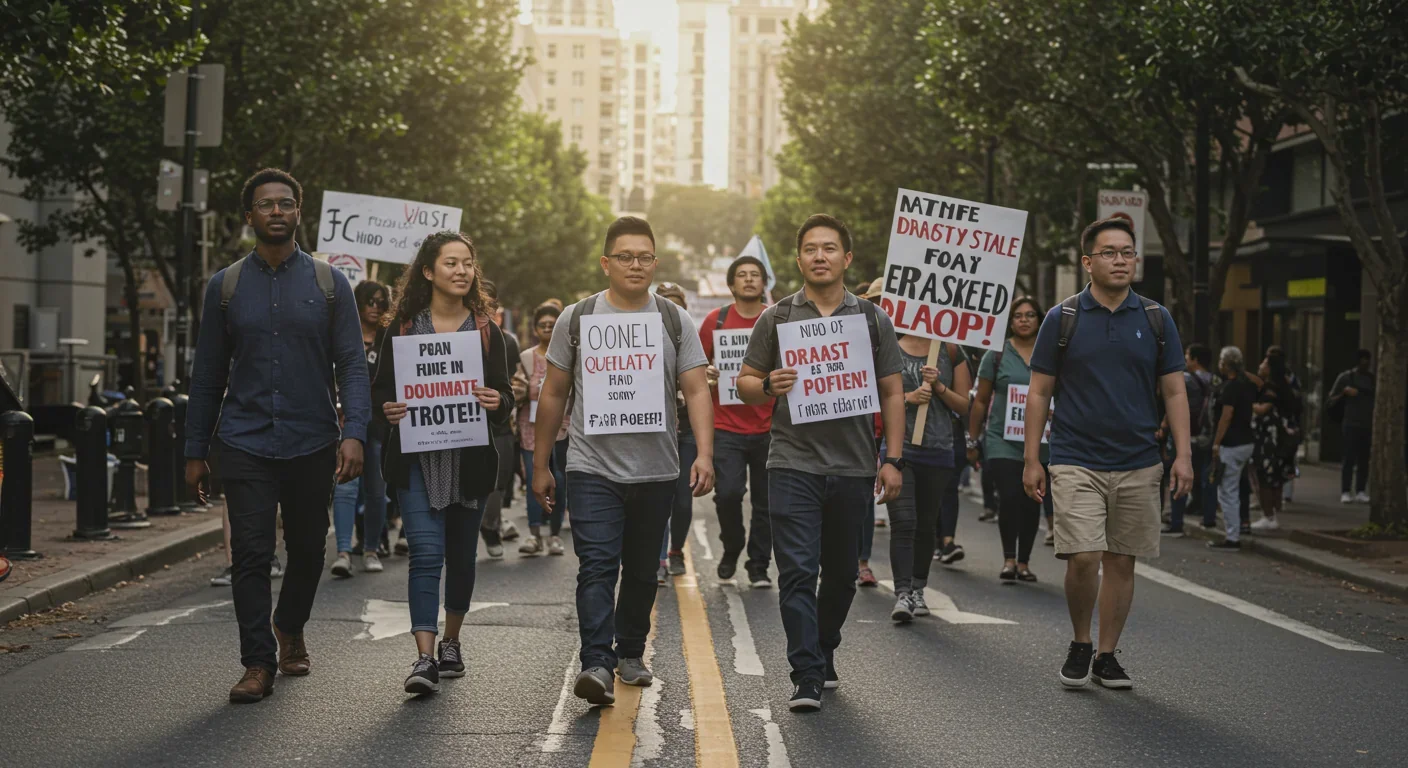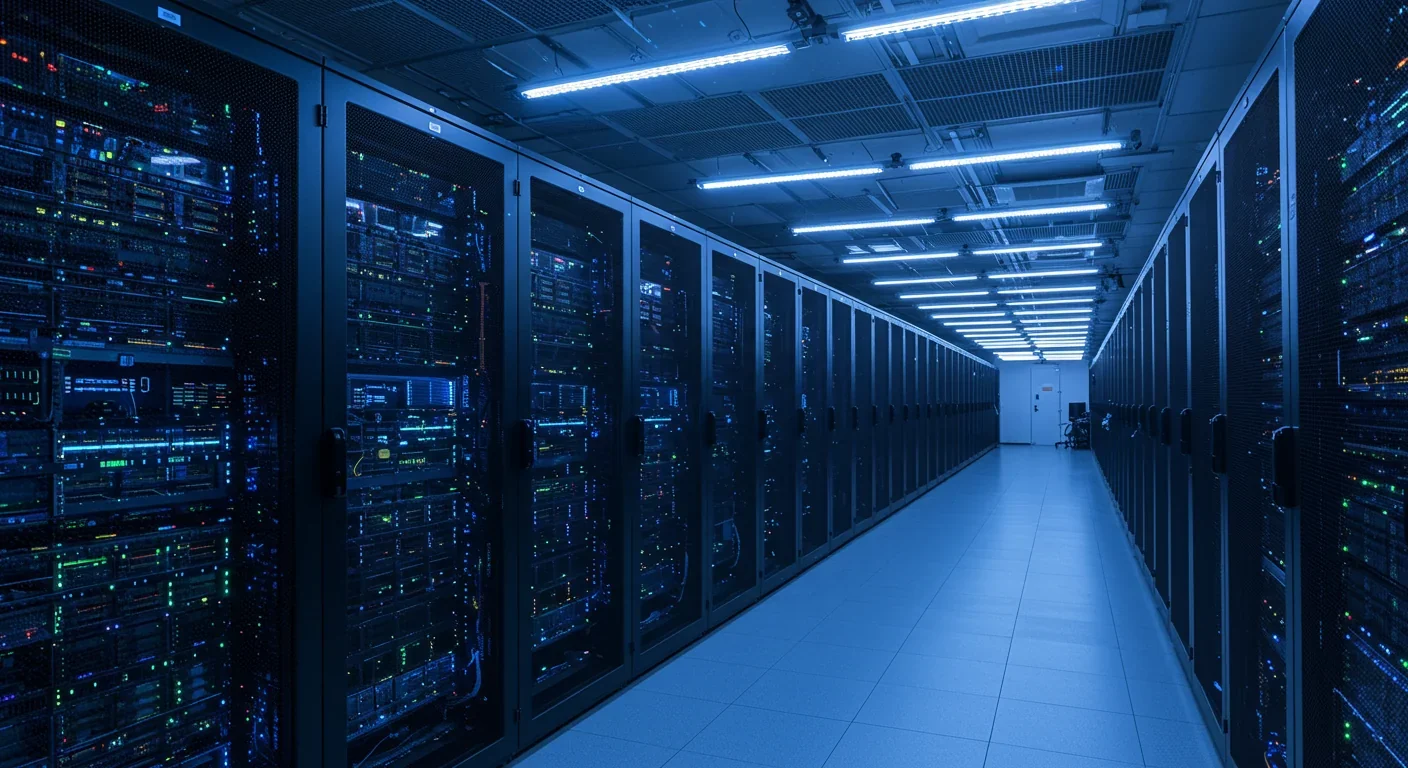The Hidden Memory Trap: Why Your Ideas Aren't Original

TL;DR: Your brain physically changes in crowds: mirror neurons create emotional contagion, your limbic system overpowers rational thinking, and your neural activity synchronizes with others. Scientists can now measure and predict these neurological shifts that explain why individuals behave so differently in groups.

Stand in a packed concert hall when the first notes drop. Feel your pulse sync with the stranger beside you, your throat raw from screaming lyrics you didn't plan to shout. Within milliseconds, your brain has mirrored the excitement around you, bypassing conscious thought entirely. This isn't just herd mentality or peer pressure—it's your mirror neuron system firing in real time, creating a biological bridge between individual minds. Scientists now understand that crowd behavior emerges from measurable neurological changes that transform how we think, feel, and decide when surrounded by others.
The phenomenon goes deeper than most realize. When you're part of a crowd, specific regions of your brain light up or dim in patterns that researchers can now predict and measure. Your prefrontal cortex—the brain's executive control center—reduces its activity, while your limbic system revs into high gear. The result? You become more emotional, less analytical, and remarkably synchronized with the people around you. Recent neuroimaging studies have captured these changes in action, revealing why rational individuals can transform into something entirely different when the crowd swells.
For decades, crowd psychology remained frustratingly vague—more philosophical speculation than hard science. That changed when neuroscientists started putting people in fMRI machines and measuring what actually happens when humans interact. The breakthrough came from hyperscanning technology, which simultaneously records brain activity from multiple people. What researchers discovered was stunning: brains actually synchronize during social interaction, creating coordinated electrical patterns that predict how groups will behave.
A landmark 2019 study published in Frontiers in Neuroscience examined the neural basis of herding decisions using event-related potentials. Participants showed an 87.7% acceptance rate when told many others had made the same choice, compared to just 62.8% when few others agreed. But the real revelation came from the brain data: researchers identified specific electrical signatures—the N2 and LPP components—that revealed the moment people switched from independent thinking to crowd-following. The N2 amplitude spiked larger during anticonformity choices, suggesting the brain works harder to resist social influence. Meanwhile, the LPP amplitude increased during herding behavior, indicating emotional processing dominated the decision.
Brain activity from small groups can predict what thousands will choose. Your individual neural patterns, when aggregated with others, forecast collective behavior with startling accuracy.
More recently, Alexander Genevsky's team demonstrated something that would have seemed like science fiction a decade ago: brain activity from small groups can predict crowd behavior among thousands. By scanning the nucleus accumbens—a reward-processing center—in roughly 40 people, researchers accurately forecasted which products thousands of online consumers would choose. Individual choices varied, but the aggregate brain activity consistently aligned with collective decisions. This suggests crowd behavior emerges from shared neurological responses, not just social pressure.

The story begins in the early 1990s in Parma, Italy. Neuroscientist Giacomo Rizzolatti's team was studying motor control in macaque monkeys when they stumbled upon cells that fired both when a monkey performed an action and when it watched another monkey do the same thing. They'd discovered mirror neurons—brain cells that blur the line between self and other.
Humans possess elaborate mirror neuron systems, concentrated in the premotor cortex and inferior frontal gyrus. These neurons activate when you watch someone smile, grimace, or reach for coffee. They're the reason yawns are contagious and why watching someone get hurt makes you wince. In 1993, psychologists Elaine Hatfield, John Cacioppo, and Richard Rapson proposed that this automatic mimicry leads to emotional convergence—the scientific term for catching feelings like you catch a cold.
The mechanism works faster than conscious thought. When you see an emotional expression, your brain mimics it within milliseconds. Your face begins subtly copying the expression before you're aware of it. This facial feedback then generates the corresponding emotion in your own body—smile, and you feel happier; frown, and your mood darkens. Multiply this effect across dozens or hundreds of people, and you get emotional contagion at scale.
"The tendency to automatically mimic and synchronize expressions, vocalizations, postures, and movements with those of another person and, consequently, to converge emotionally."
— Hatfield, Cacioppo, and Rapson, defining emotional contagion (1993)
Historically, philosophers and social theorists noticed crowd effects but couldn't explain them. Gustave Le Bon's 1895 book The Crowd described how individuals in groups "descend several rungs in the ladder of civilization," becoming more primitive and emotional. He was right about the observation but wrong about the cause—he attributed it to some mystical "group mind" rather than biology. Sigmund Freud later suggested crowds satisfied unconscious desires for authority figures. It took neuroscience to reveal the actual machinery: your brain physically changes how it processes information when other brains are nearby.
Think of your brain as having two main drivers: the limbic system handles emotions and instincts, while the prefrontal cortex provides rational analysis and impulse control. In everyday life, they work together—your prefrontal cortex can override emotional reactions, helping you stay calm in traffic or resist that third slice of cake. But in crowds, this balance shifts dramatically.
The limbic system includes structures like the amygdala, which processes fear and aggression, and the nucleus accumbens, which handles reward and motivation. These regions evolved millions of years ago to help our ancestors respond quickly to threats and opportunities. Speed mattered more than accuracy in the savanna. The prefrontal cortex, by contrast, is evolutionarily recent—it gives us the ability to pause, reflect, and make complex decisions.
Research shows that crowd situations activate the limbic system while reducing prefrontal cortex activity. An fMRI study on group versus individual problem-solving found distinct neural patterns: solo thinking engaged more of the dorsolateral prefrontal cortex, associated with working memory and executive function. Group contexts shifted activity toward regions involved in social processing and emotion regulation. Essentially, your brain stops treating the situation as a logic puzzle and starts treating it as a social event.

The neurotransmitter oxytocin plays a crucial role here. Often called the "bonding hormone," oxytocin surges during positive social interactions—hugging, teamwork, shared laughter. It enhances trust and empathy, making you more receptive to others' emotions. Recent research revealed that oxytocin powers altruistic responses through parallel brain circuits, including pathways that bypass conscious deliberation. In crowd settings, elevated oxytocin can make you feel intensely connected to strangers, lowering your psychological guard.
Dopamine also spikes in group contexts, especially when the crowd shares a goal or celebrates together. That rush you feel when your team scores or when the concert crescendos? That's dopamine flooding your reward system, reinforcing the behavior and making you want to stay engaged with the group.
The most fascinating research involves measuring brain synchronization between people. When two or more brains engage in coordinated activity, their neural oscillations begin aligning—a phenomenon called interbrain coupling. This isn't metaphorical; it's literal synchronized electrical activity.
Studies using dual-EEG setups have shown that cooperation increases neural synchrony far more than competition or solo work. When people work together toward a shared goal, their brain waves synchronize in the alpha and gamma frequency bands—patterns associated with attention and information processing. This synchronization correlates with better performance: teams with higher interbrain coupling solve problems faster and more accurately.
When you strongly identify with a group—feeling "we're all in this together"—your brain integrates activity across multiple regions more effectively during collective tasks.
A particularly striking study examined group identification and collective performance. Researchers found that when people strongly identify with their group—feeling that "we're all in this together"—their brains integrate activity across multiple regions more effectively during collective tasks. The effect was strongest in areas involved in social cognition and mentalizing (thinking about others' mental states). Group members literally thought more similarly, their neural patterns converging around shared goals and perspectives.
Real-world examples abound. At live concerts, audiences show synchronized heart rates and brain activity that don't occur when listening to recorded music at home. Sports fans watching their team experience coordinated emotional responses—joy, anxiety, disappointment—that ripple through the stadium in measurable waves. Religious gatherings, protest marches, and even business conferences create these synchronization effects.
The implications extend to understanding mob behavior. When negative emotions spread through a synchronized crowd—fear, anger, resentment—the same neurological mechanisms amplify the feeling. The 2014 Facebook emotional contagion experiment demonstrated this at scale: researchers manipulated 689,000 users' news feeds to show either more positive or negative content, then measured how it affected users' own posts. The results were clear: emotional content spread contagiously, with people exposed to negativity posting more negative content themselves. The experiment was controversial ethically, but it proved emotional contagion works even through digital interfaces.

Psychologists have long known that people behave differently in groups than alone, but the Social Identity Model of Deindividuation Effects (SIDE) provides a framework for understanding why. When you join a crowd, your personal identity becomes less salient, and your social identity—your sense of being part of the group—dominates your psychology.
This isn't about "losing yourself" in some mystical way. Instead, it's a cognitive shift where group norms become your behavioral compass. If everyone around you is cheering, cheering feels natural and right. If anger fills the air, you're primed to feel angry too. Your prefrontal cortex, normally skeptical and questioning, essentially outsources decision-making to the collective.
Herd mentality emerges from this shift. Also called "mob mentality" or "pack mentality," it describes how people adopt the behaviors and attitudes of the surrounding group. Classic examples include financial bubbles (everyone's buying, so it must be smart), fashion trends, and panic buying during crises. The neurological basis is that your brain interprets mass behavior as social proof—if many others are doing something, your ancient survival instincts suggest it's probably adaptive to follow along.
"Individuals in groups descend several rungs in the ladder of civilization, becoming more primitive and emotional."
— Gustave Le Bon, The Crowd (1895)
Research distinguishes between different types of crowd behavior. Peaceful protests where people maintain individual judgment represent one end of the spectrum. Riots where violence spreads contagiously represent the other. The difference often comes down to the emotional tenor set early in the gathering and the presence or absence of factors that maintain prefrontal control—structured leadership, clear goals, and social norms against violence.
Interestingly, social identity theory suggests that group membership enhances certain cognitive abilities while impairing others. You become better at coordinating with group members and detecting shared opportunities or threats. You become worse at critically evaluating group decisions or recognizing when collective action is misguided.
Not all crowd synchronization is benign. History provides grim examples: stampedes, lynch mobs, genocides committed by otherwise ordinary people. The same neurological mechanisms that create positive collective experiences can fuel destructive ones.
Stampedes often begin with fear contagion. Someone panics, others mirror that panic, and within seconds, the entire crowd is fleeing. Individual rational thought—"maybe we should move calmly"—gets drowned out by the limbic system's screaming alarm. The 2022 Halloween crowd crush in Seoul, South Korea, killed 159 people, many trampled in a narrow alley as panic spread faster than information. Similar tragedies occur at sporting events, concerts, and religious gatherings when fear spreads too quickly for reason to intervene.
Mob violence represents another disturbing manifestation. Online, mob psychology now characterizes the internet, with social media platforms amplifying emotional contagion. Outrage spreads through networks as users mirror each other's anger, often directed at individuals who've committed real or perceived transgressions. The neuroscience is identical to physical crowds: mirror neurons create empathetic resonance with others' anger, limbic system activation overwhelms prefrontal caution, and social identity effects create in-group solidarity against an out-group target.
Public safety officials increasingly incorporate this science into crowd management strategies. Understanding that panic is contagious has led to better venue design—multiple wide exits instead of narrow bottlenecks, clear sightlines to reduce anxiety, and gradual dispersal protocols. Security personnel are trained to project calm because they know emotional states spread. Event organizers use lighting, music pacing, and strategic messaging to influence collective mood.

Researchers also study positive applications. If negative emotions spread contagiously, so do positive ones. Studies show happiness can spread through social networks up to three degrees of separation—your friend's friend's friend's happiness can influence your mood. Public health campaigns now consider emotional contagion: if you want a behavior to catch on, surround the target audience with people already doing it enthusiastically.
Understanding crowd neuroscience raises profound questions about autonomy and responsibility. If your brain literally functions differently in groups, are you fully accountable for actions taken during collective events? Legal systems generally say yes—mob participation doesn't excuse violence—but the neuroscience complicates simple notions of individual choice.
The knowledge also has practical applications. Teachers can create classroom environments that leverage positive emotional contagion, making learning feel more engaging and collaborative. Business leaders can design workspaces and meetings that encourage the beneficial aspects of collective thinking—creativity, motivation, shared purpose—while preserving enough individual autonomy for critical analysis.
Your brain works hard to create empathy over video calls, but it's not as powerful as in-person interaction. This might explain why video meetings feel exhausting yet less emotionally engaging.
The rise of remote work and digital communication presents interesting challenges. Can you get brain synchronization over Zoom? Research suggests yes, but it's weaker than in-person interaction. The mirror neuron system responds to faces on screens, but the effect isn't as powerful. This might explain why video meetings feel exhausting yet less emotionally engaging than physical gatherings—your brain works hard to create empathy and connection without the full sensory cues it evolved to process.
Social movements increasingly recognize the power of collective emotional experiences. Organizers of protests, rallies, and marches carefully choreograph events to create synchronization—chants, songs, synchronized gestures. These aren't just symbolic; they literally synchronize participants' brains, strengthening group identity and commitment to shared goals. The neuroscience explains why people who attend in-person events become more dedicated activists than those who support a cause from home.
Marketers and politicians have long intuited these principles. Campaign rallies create emotional contagion that strengthens supporter commitment. Concert tours sell experiences of collective joy that solitary listening can't match. The most successful movements—whether selling products or ideas—understand that human brains are deeply social organs that crave synchronized experiences with others.
Scientists worldwide are racing to map the complete picture of collective neuroscience. In the United States, neuroscientists like Alexander Genevsky at Stanford use fMRI to forecast crowd decisions. European researchers employ hyperscanning techniques to study real-time brain synchronization during jazz improvisation and dance. Asian research teams examine cultural differences in crowd behavior—whether Eastern collectivist cultures show different neural patterns than Western individualist ones during group interactions.
Early evidence suggests culture matters. Collectivist societies, where group harmony is paramount, may show enhanced baseline activation in brain regions processing social information. Individualist cultures might maintain stronger prefrontal control during group interactions. But these are preliminary findings; the field is young.
The COVID-19 pandemic created an accidental global experiment in crowd behavior. When millions isolated at home, researchers noticed shifts in social media emotional contagion patterns. Anxiety and loneliness spread contagiously online, demonstrating that digital networks create their own form of crowd effects. The return to in-person gatherings brought visible relief—humans need physical proximity for full emotional connection.
Future research directions include understanding individual differences in susceptibility to emotional contagion. Why do some people catch emotions easily while others remain emotionally independent? Are there genetic or developmental factors? Could we train people to maintain better prefrontal control in crowd situations?
Another frontier involves therapeutic applications. If brain synchronization helps groups perform better, could therapists use it to help couples reconnect or families heal conflict? Some researchers are exploring synchronized meditation, movement therapy, and other interventions that deliberately create interbrain coupling for psychological healing.
Understanding the neuroscience doesn't make you immune to crowd effects, but it provides useful awareness. Knowing that your prefrontal cortex will be compromised in large groups should make you cautious about making major decisions at rallies or conferences. Recognizing emotional contagion helps you pause before retweeting outrage or joining pile-ons—is this really how you feel, or are you mirroring the crowd?
Some practical strategies emerge from the research. Before entering high-emotion group situations, explicitly remind yourself of your values and goals—this primes your prefrontal cortex to maintain some oversight. During events, periodically check in with yourself: "Is this emotion mine, or did I catch it?" Physical distancing within a crowd—standing back from the densest areas—reduces the intensity of synchronization effects.
For parents and educators, the research suggests teaching children about emotional contagion and group dynamics from an early age. Understanding that their brains are wired to mirror others helps them recognize when they're being influenced. This awareness won't eliminate the effects—they're too fundamental to our neurobiology—but it adds a layer of metacognitive monitoring that can temper extreme responses.
Society also needs better collective wisdom about crowd dynamics. Event safety shouldn't be an afterthought; it should incorporate modern neuroscience about panic contagion and emotional spread. Online platforms could use this knowledge to design systems that limit viral outrage while preserving genuine community connection. Policymakers might craft regulations that account for how crowds think differently than individuals.
The ultimate lesson? Your brain is a deeply social organ. It's built to connect, synchronize, and merge with other brains around it. That's not a bug—it's the feature that let our ancestors coordinate hunts, build civilizations, and create culture. But like any powerful tool, it comes with risks. Crowds can inspire transcendent joy or unleash horrifying violence, depending on which emotions catch fire and spread.
We're only beginning to understand the full picture. Each new study reveals another layer of how individual neurons create collective consciousness. The question now isn't whether our brains change in crowds—that's settled science. The question is what we'll do with this knowledge. Will we design better gatherings, safer events, healthier online communities? Or will we continue stumbling through crowd dynamics as if our Stone Age brains can handle modern mega-cities and global networks without guidance?
The next time you're swept up in a moment—a concert, a protest, a celebration—take a breath and appreciate what's happening. Your brain is doing something extraordinary: temporarily dissolving the boundaries between self and other, creating a genuine "we" from a collection of "I"s. It's one of our species' superpowers. The trick is learning to wield it wisely.

Curiosity rover detects mysterious methane spikes on Mars that vanish within hours, defying atmospheric models. Scientists debate whether the source is hidden microbial life or geological processes, while new research reveals UV-activated dust rapidly destroys the gas.

CMA is a selective cellular cleanup system that targets damaged proteins for degradation. As we age, CMA declines—leading to toxic protein accumulation and neurodegeneration. Scientists are developing therapies to restore CMA function and potentially prevent brain diseases.

Intercropping boosts farm yields by 20-50% by growing multiple crops together, using complementary resource use, nitrogen fixation, and pest suppression to build resilience against climate shocks while reducing costs.

Cryptomnesia—unconsciously reproducing ideas you've encountered before while believing them to be original—affects everyone from songwriters to academics. This article explores the neuroscience behind why our brains fail to flag recycled ideas and provides evidence-based strategies to protect your creative integrity.

Cuttlefish pass the marshmallow test by waiting up to 130 seconds for preferred food, demonstrating time perception and self-control with a radically different brain structure. This challenges assumptions about intelligence requiring vertebrate-type brains and suggests consciousness may be more widespread than previously thought.

Epistemic closure has fractured shared reality: algorithmic echo chambers and motivated reasoning trap us in separate information ecosystems where we can't agree on basic facts. This threatens democracy, public health coordination, and collective action on civilizational challenges. Solutions require platform accountability, media literacy, identity-bridging interventions, and cultural commitment to truth over tribalism.

Transformer architectures with self-attention mechanisms have completely replaced static word vectors like Word2Vec in NLP by generating contextual embeddings that adapt to word meaning based on surrounding context, enabling dramatic performance improvements across all language understanding tasks.